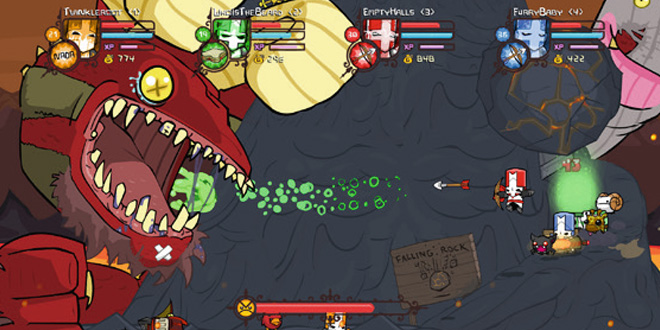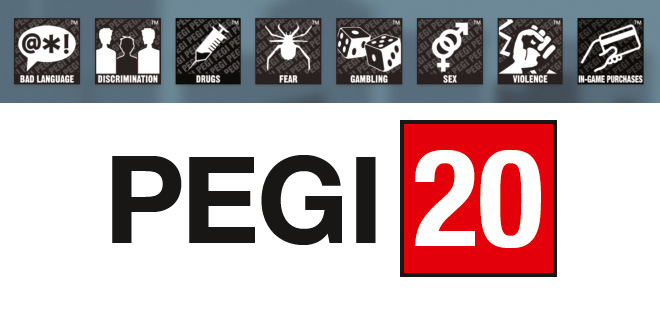 In the midst of celebrating 20 years of the PEGI ratings system at WASD x IGN, Ian Rice, director general of the Games Rating Authority, took some time out to answer our questions.
In the midst of celebrating 20 years of the PEGI ratings system at WASD x IGN, Ian Rice, director general of the Games Rating Authority, took some time out to answer our questions.
Congratulations on hitting 20. Why the need to celebrate?
PEGI has established itself as a trusted age rating system over the course of two decades. PEGI ratings and other content advice provide valued and consistent information to parents, carers and players to help them make informed decisions. Over the years, the PEGI system has expanded to provide ratings not only on console games but across an ever-increasing number of digital storefronts. We think it’s a great time to recognise both the scope and success of the system.
How does the system work in terms of what publishers are obligated to reveal and what can be self-certified ahead of a rating being decided?
Every year, we rate approximately 600 games for release on physical formats. To obtain a PEGI rating for these types of games, the developer first declares any relevant content, such as violence, horror, sex, drugs or bad language, to help us generate a provisional rating for use in advertising. Developers must then provide us with video footage illustrating the types of content they’ve disclosed, and this video footage will be reviewed by our examiners. After that, the examiners will play the game itself to ensure that the video footage is a fair representation or whether selecting other options – for example, using different weapons, or attacking specific types of characters – might produce a different outcome that could affect the rating.
Assuming the provisional rating is correct, this will then be replaced with an official rating, meaning the game can be supplied to the public. However, if the developer has any issues with the final rating, they are free to discuss it further with us. Of course, because we talk to developers at all stages of the rating process, including before games are formally submitted, any problems can often be identified and resolved before we reach the final stage of the process. When it comes to games being released online only, the initial rating is generated by the publisher filling in an online questionnaire provided by the International Age Rating Coalition (IARC).
The Games Rating Authority checks the ratings of around 4000 online games each year. We focus our efforts on console games and the top downloads, because those are likely to be played by the greatest number of people – especially children. In our experience, around 95% of products are correctly rated via the IARC self-rating questionnaire. But if a rating or a content description needs to be adjusted, this can be done very quickly.

How has the PEGI system evolved and how do you measure its success?
The basic system – in terms of the familiar PEGI 3, 7, 12, 16 and 18 ratings – has remained consistent, as have the key content issues we focus on, such as violence, horror, sex, drugs and language. The fact it has been in place for twenty years means that it’s very well-established- especially with younger people who have grown up with it.
Of course, how we rate games has evolved as attitudes and tastes change. For example, in 2021 the rating criteria were amended to ensure that stronger horror and gory images are now rated at PEGI 16, and earlier this year we adjusted the rating criteria for violence to permit more realistic types of violence to be allowed at PEGI 12 in more fantastical contexts – provided there’s no stronger detail such as blood.
This was the result of feedback from parents and teenagers, who felt that some games, such as those in certain superhero series or in sci-fi series like Star Wars, were being rated too harshly at PEGI 16. Away from traditional content issues, such as violence and horror, the system has also evolved to give parents and carers more information about the wider context of play. For example, the introduction of icons indicating the presence of in-game purchases.
The final measure of success has to be trust and recognition of the system and I’m pleased to say that recent research we commissioned showed that 84% of parents and carers always or sometimes follow PEGI ratings, while 86% of parents said they used PEGI ratings when purchasing games.

In an increasingly digital marketplace, how do you maintain visibility and authority?
Obviously, the PEGI ratings are already very well known from their appearance on all boxed games. We’ve worked hard with industry and other partners to ensure that the PEGI ratings remain visible in an online context, including across digital console games and across many of the major app stores and digital storefronts. Because of the volume of content available digitally, it’s particularly important to ensure that ratings can be generated very rapidly and at large scale across the world.
We work in partnership with age rating authorities across the world, including in North America, Australia, Brazil and South Korea, to ensure that the IARC rating tool continues to function effectively when generating digital ratings. As well as adjusting ratings, where necessary, the rating authorities also share information and work together to discuss improvements to the system. More storefronts continue to join the system.
In terms of the visibility of the ratings, the PEGI Code of Conduct – to which developers sign up – has played a key role in ensuring that our ratings remain visible beyond stores and digital storefronts.
For example, games that are rated under the system are obliged to carry information about PEGI ratings in a range of situations, such as on trailers and in other forms of marketing. That’s why phrases such as the ‘PEGI 18’ spoken at the front of trailers has become such a trope for players.
We also work to promote age ratings through our own app and website, as well as www.askaboutgames.com, in conjunction with Ukie, to ensure people have access to good information about games. The website and app not only tell you a game’s rating and content descriptors (e.g. violence, language) but also give a more detailed breakdown of game content.
But overall, the best way to maintain authority is through having a widely understood, trusted and understandable system. PEGI meets those criteria, and we think it is well set to do so in the future too.

What would you say was most misunderstood about the PEGI system and how it operates?
I would say that the biggest misunderstanding is that PEGI is not really about age-gating content but about informing parents and carers so they can make their own decisions about what is right for their families. While PEGI, through a mixture of public research and advice from experts, has evolved a sophisticated system to indicate what types of content are likely to be appropriate for different ages, we know that every child and every family is different. Ultimately the system is there, especially in an online environment, to give parents, carers, and others all the information they need to make fully informed decisions, based on their knowledge of their own children.
The purpose of PEGI isn’t to prevent parental or carer decision making; it’s to strengthen it. That’s why we focus on delivering consistent, robust, and effective information to ensure that parents and carers can make informed choices in line with what they’re comfortable with.
PEGI is a European system. Why haven’t we thrown it on the regulatory bonfire and created a good old British system instead?
As our research has demonstrated, the PEGI system is already well established, widely recognised, and a trusted source of information for parents and carers in the UK and beyond. While the system was designed to be pan-European, as its name suggests, it was actually created as a self-regulatory framework outside of EU law with around 40 countries, including both countries within the EU and countries outside the EU, adopting it.
In the UK, PEGI became the legal standard in 2010 after long consideration of whether it, or the BBFC rating system, should be chosen as the national age rating system. Our participation in PEGI, and our presence in the UK, also means that our national standards are taken into account from PEGI.
A single rating system across Europe makes sense for the industry, making their processes more efficient. We feel that we benefit from working closely with colleagues from Europe, just as we benefit from working closely with colleagues from the rest of the world through our involvement in IARC.

Given that games that encourage or teach gambling should be rated 18 and some would argue that the likes of FIFA (as was) do exactly that, is the system fit for purpose?
The PEGI criteria state that games which glamorise or teach gambling will be rated 18. The types of games we’re thinking about here are games which feature, for example, virtual casinos or elements which specifically teach players how to play the odds in sports, such as horse racing. Guidance around in-game purchases and mechanics is provided separately through content indicators, with developers responsible for complying with other relevant regulatory and self-regulatory commitments.
However, we understand that parents and carers want information about in-game features, such as spending. The PEGI system achieves this by showing the presence of in-game purchases and/or paid random items via a descriptor icon.
When it comes to concerns about various in game features, such as managing time spent playing, communications with other players, and in-game spending, we offer information on our website and on the PEGI app about how parents can manage those non-content related aspects of gaming. We also support industry efforts to promote the use of parental controls.
What are the challenges the Games Ratings Authority faces over the coming years?
The main, and ongoing, challenge is to ensure that the PEGI system remains widely recognised and trusted by future generations. In practice, this means we have to stay on top of a few key areas.
First, we need to continue to make sure PEGI remains prominent in the digital arena to ensure it keeps up with how consumers obtain and experience games, now and in the future. Second, we need to make sure it retains a close focus on rating the content of video games first and foremost, to ensure that it can remain an effective tool for parental decision making – rather than bluntly applying age barriers to content. Third and finally, we need to make sure that the system evolves to meet the concerns of parents and carers today. For example, we think that concerns around the portrayal of discrimination in games is becoming more of a concern for parents and carers and we need to consider how PEGI reflects that effectively.
But overall, we’re optimistic for the future. Age ratings have become a recognised and trusted part of the overall games ecosystem and we believe that their effectiveness in communicating information ensures they will stay an important part of it.

 MCV/DEVELOP News, events, research and jobs from the games industry
MCV/DEVELOP News, events, research and jobs from the games industry




